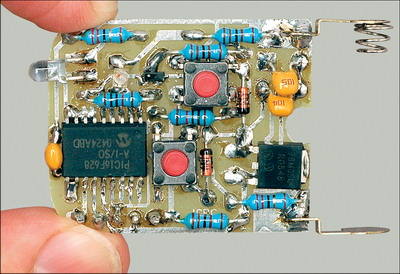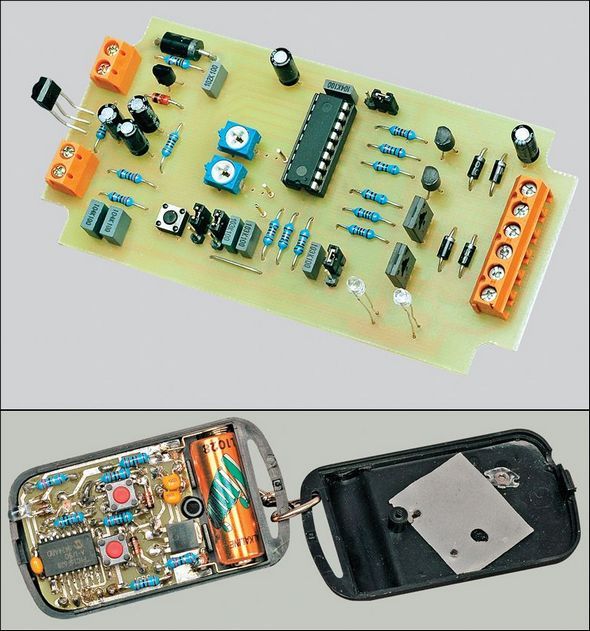
Ideal for keyless entry for doors in the car, home and industry, this Keyless Entry System includes a rolling code to provide high security. It also has two door knock outputs, an alarm system, and a provision for using 16 separate key fob transmitters with the same receiver.
Many different electronic systems have been developed for keyless entry. These include systems that require an coded electronic key, such as RF and infrared transmitters, RFIDs (Radio Frequency Identification Devices), keypads, and swipe cards. There are also units that do not require a coded electronic key and include fingerprint, face and iris recognition functionality.
Regardless of the form, electronic keys usually contain a small keychain style transmitter and a receiver with a door locking mechanism. The transmitter sends a string of data that is unique to each lock, and this data must match the data stored in the receiver before the lock is released. The concept is roughly similar to a standard metal key with a pattern of peaks and valleys along its length. These hills and valleys must match the drums inside the lock for the lock to be unlocked.
With any type of lock, there is always a security issue. While many conventional RF and infrared transmitters are tamper-proof, keys can be easily copied. One technique is to use a special receiver to intercept and copy the transmitted code. Once copied, the signal can be transmitted back to the door lock for intrusion.
In fact, this technique was widely used by car thieves and proved very effective against early electronic locking systems. It can also be used to open automatic garage doors and access buildings.
Receiver and transmitter circuit diagram

Security System Features and Specifications
Transmitter:
Rolling code infrared transmission
small keychain style case
Dual function buttons
Randomization of code parameters feature
Parameter synchronization feature
Up to 16 definitions
Receiver:
12V operation
Up to 16 separate transmitters can be synchronized
Binary function with independent output
Two alarm inputs with exit and entry delays
Two door knock outputs
Alarm output
LED indicator
Arm outlet reversing option
Adjustable door knock, entry/exit delay and alarm periods
200 code look-ahead feature
Transmitter locking feature
Modern transmitters now solve this problem by changing their code each time they send a signal. Therefore, if an unauthorized person intercepts the transmitted code, resending this code will not unlock the door. This is because the door lock is waiting for a new code based on an algorithm that both the transmitter and receiver have in common.
The PIC16F628A microcontroller forms the heart of the transmitter circuit. It contains all the necessary software to generate the code and drives an infrared LED (LED1).
This code substitution technique is often referred to as “rolling code”, but is sometimes also known as “code skipping”. It makes copying impossible and thus provides a very high level of security. It is also nearly impossible to send an accurate code without a valid rolling code transmitter. This is due to the large number of possible code variations.
Due to its security advantages, a rolling code transmitter forms the basis of the Rolling Code Keyless Entry System described here. In fact, the probability of randomly choosing a correct code for our rolling code transmitter is one in 1.4 trillion, or one in 1012.

Source: http://www.siliconchip.com.au/cms/A_109340/article.html
Remote Controlled Security System project files Alternative link:
Password: 320volt.com
Published: 2008/09/02 Tags: microchip projects, microcontroller projects, pic assembly example, pic16f628 projects, pic16f88 projects
45-Seconds Voice Recording Circuit with HK828
Voice Recording Circuit HK828 and LM358 based on the supply voltage 9-14 volt DC Microphone with 45 seconds voice recording can be done recording the sound level rises to the outlet to an amplifier can connect a record eight separate section hiding the corresponding button with the records can be accessed
Voice Recording Circuit